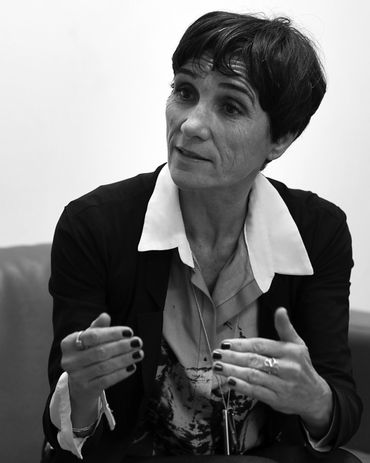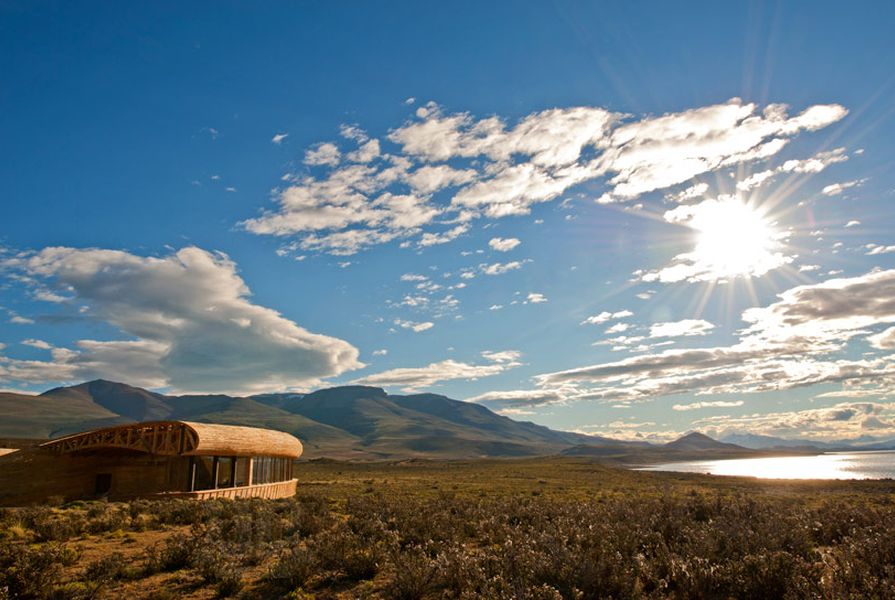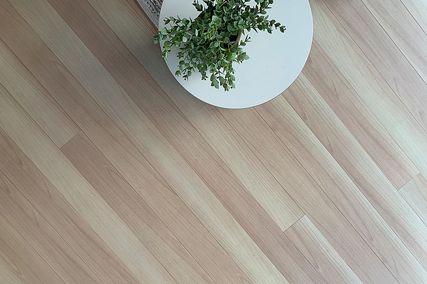Rowena Hockin: How do you engage with a site when you’re working on a project? You mentioned a site tour you did on horseback – which is a fairly extreme example of understanding a site.

Cazu Zegers.
Image: Peter Bennetts
Cazu Zegers: I have to go back to when I was an architecture student and I started doing motocross. I was getting really out there with the speed! Speeding too much, and my boyfriend got a scare! He said, “Why don’t we sell this motocross bike and buy a motorcycle?” And I said, “Good.” So we travelled for three years in our summer vacations through all of Chile.
RH: So you have been the whole length of the country?
CZ: The whole country, yes. From Arica to Tierra del Fuego, through the coast and through the Andes. I explored all of the southern part of Chile. So, I have the territory in my body, you see. We did it in the 1980s when it was a very undeveloped country, so nature was really in a very pure state. It was amazing. Twenty years later, things are not as good. Mining is a real problem, also energy, and I’m seeing towers all over the place. We are redeveloping, but still, there seems to be no space for the poetic. It makes me think people don’t understand the real value of Chile – it is the landscape.
RH: You referred to a quote in your presentation, “The territory is to America as the monuments are to Europe.” You have also used Nicanor Parra’s quote: “Chile, before a country, is a landscape.” I feel that those quotes apply equally well to Australia.
CZ: Yes. It’s my first time in Australia. I always had the feeling, but I never realized that there was so much in common. Also, in New Zealand last year also, I thought it’s like Chile. So it’s really interesting this “nearness” as I call it, we have so much to learn from each other.
RH: I’m interested in these gestures you create that relate to the landscape. I feel that a lot of the Australian architectural responses to landscape sit apart from the landscape, above the landscape. How do you respond in your architecture to landscape?
CZ: I’m very (how do you say that word in English?), I’m very polite with landscape. It’s like this sensitivity that Indigenous people have. I think Australians have to learn more from the sensitivity of Indigenous people, then you will be respectful of the landscape. And from that you realize that it is sacred and that it supports culture, and life. It’s really important to understand the meaning of that – to ritualize and not demystify the land.
Zeger’s design for Hotel Tierra Patagonia is in harmony with the landscape.
Image: PIa Vergara
RH: How do you generate an initial response to a site?
CZ: Gesture. It’s always gesture.
RH: Do you have an innate sense as to what the right gesture is to bring to that site?
CZ: Yes, yes. I have this intuition that is very accurate with places; I guess because I do a lot outside. I really like to be connected to nature, to go into a river and to swim, to go to a forest for the smell.
RH: What determines a material response to site?
CZ: It’s the place. Like in the coast, because of salt degradation, I think concrete works really well. Then in the south part of Chile, concrete is really ugly because it gets very humid and the wood is really part of the land. Then in the north part, I can work with wood again, or with earth. It’s the material from the place. I also work a lot with glass but in urban spaces.
Hotel Tierra Patagonia The dining room.
Image: Fabrizio Fasano
RH: When you are dealing with an urban environment, what creates the gesture in that environment?
CZ: Again it’s the landscape, but sometimes I have a building where I’ve thought about doing an inner landscape, you know, and my house is a dialogue with landscape again. It’s everywhere. We have the Andes all the time in front of us, so it’s very difficult not to do it. My house that I didn’t have the time to show, there are a lot of walls – just for the beauty of doing walls! They are not useful for anything, except to create feeling and this transition to inner space.
Making 2014 was presented by the Australian Institute of Architects.

























